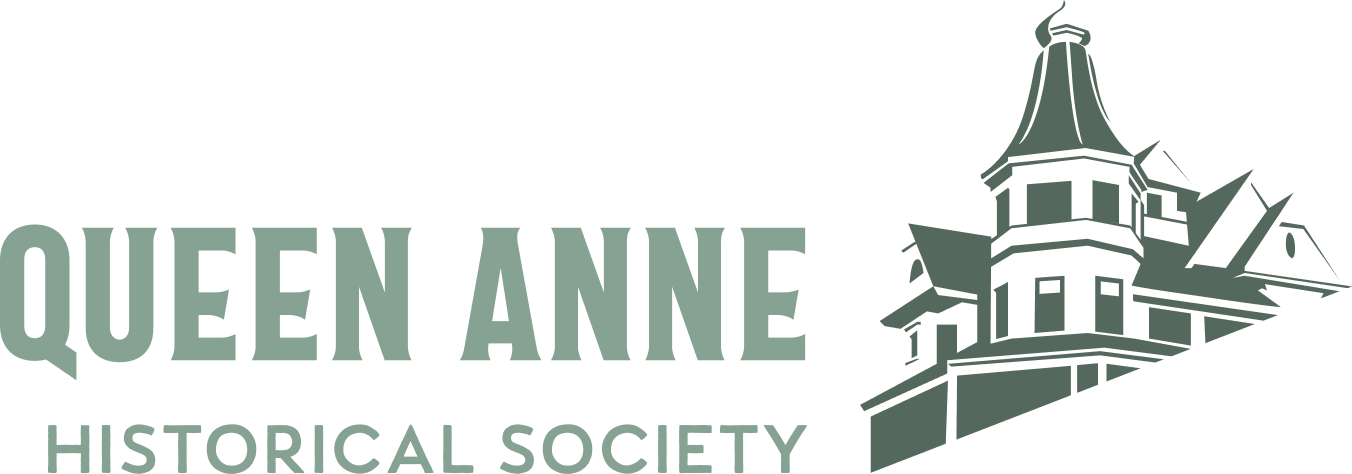1423 First Ave. N. Part II: History Congealed
Thinking about local history, I often focus on details and not on broader contexts. The rebuilt house at 1423 First Ave. N. is a fantastic example of how I considered the historic building while losing sight of its historic context. The rebuilt house not only respects the historic qualities of the street and neighborhood, but also when thinking about nearby buildings and streets, nearly all the post-European settlement of Queen Anne congeals right there at the tippy top of the hill,
I first wrote about this house last summer (June 2024) as workers took apart an abandoned and derelict house. Revisiting the site six months later, I was thrilled to see the transformation and how the reconstructed house draws our attention to the historic qualities of the street and the neighborhood.
As seen on June 1, 2024 as reconstruction got underway. Photo: Author
The almost completed property shown below does try to hide its historic origins. The board and batten siding on the second story facing east to 1st Ave. N. and the artificial wood below that wraps the rest of the house are convincingly new. The original house had shingles above and narrow clapboard below. The two decks on the rear also have no historic precedents, but they do exploit the fantastic views to Elliott Bay and the mountains. From a preservation point of view, the decks are just fine because they are not visible from the public right of way. What is wonderful is the efforts the owners, with whom I had a brief conversation, made on the primary east facing facade to retain the bay window, the central dormer and the broad roof overhangs. These details clearly proclaim the building’s historic roots. In light of the dramatic changes proposed in the One Seattle Plan (1), the reconstructed house with its four housing units carefully retains the historic mass and scale of the building and continues to relate to the neighborhood’s historic character
Looking west. Note bay window, dormer and overhanging eaves. As seen on November 19, 2024. Photo: Author.
Lying one building south of Galer St. and the steps that lead down to Queen Anne Avenue on the edge of a steep slope, 1423 1st N. is an important buffer between the single family neighborhood that spreads north, south and east of the site. Being so close to Galer St., it reminds us of the thousands of children who between 1909 opening of Queen Anne High School and its 1981 closing, trudged up and down the steps every day on the way to and from the streetcar, later trolleybus, line, on their way to school. The multifamily apartment dwellings at the top of those stairs also remind us that even as late as 1950 when the apartment building next door at 33 Galer St was completed, Queen Anne was a working class neighborhood whose proximity to the streetcar/trolleybus enhanced the location for downtown workers. All that history is within fifty feet of 1423. Go a little way to the south, you’ll find richer connections to our history. Before you get to Lee St, the nearest street south of Galer, you find Observatory Park with its tennis court, the giant water tower, and Fire Station #8. Without the original water towers built in 1902 and 1904 (crenelated tower #1 is one of few designated city of Seattle Landmarks to have been purposefully demolished — I think there are but two), there would have never been enough water or water pressure to build all the homes on the hill. The firefighters of Fire Station #8, which moved from 5th Ave W. between Galer and Garfield in about 1900 (it too was replaced in 1962 and rebuilt in 1986), have probably preserved an immeasurable portion of Queen Anne historic character with all that water! Also reminiscent of Seattle’s multimedia history are the five nearby television and microwave towers along Galer.
Looking southeast at the back side of 1423. Note decks and pavers which lead to the pathway from Galer St. As seen on November 19, 2024. Photo: Author.
The owners of 1423 are clearly conscious of how the house ties to the historic fabric of the neighborhood. They also own the brick veneer 1950 apartment building at 33 Galer Street, which lies just north of 1423 (the terra cotta decorations added in 2006 (2) are a curious touch). There were able to relate the two buildings by creating a walkway from Galer to the backyard of the 1423 along the western edge of the brick building.
Looking south at the top of the steps from Queen Anne Ave. at 33 Galer St. towards the fire station tower. November 24, 2024. Photo: Author
Looking south along the newly constructed pathway from Galer St. to the backyard of the rebuilt home at 1423 1st N. November 24, 2024, Photo: Author.
Strange as the verb may sound, the idea of history congealing around old buildings is an attractive one. After all, as the Secretary of the Interior recommends. one of the first steps in describing a potential landmark is to describe its historic context. Queen Anne’s historic context statement can be found here on the city’s Historic Preservation Program’s website. It serves as the underlying description of all Queen Anne’s designated landmarks and obliquely points to all the post settlement history that congeals around the house at 1423 1st Ave, N.!
_______________________________________________
The One Seattle Plan proposes up zoning to encourage multifamily housing throughout the neighborhood. It comes before the Seattle City Council for approval in 2025.
City of Seattle, building permit history.





